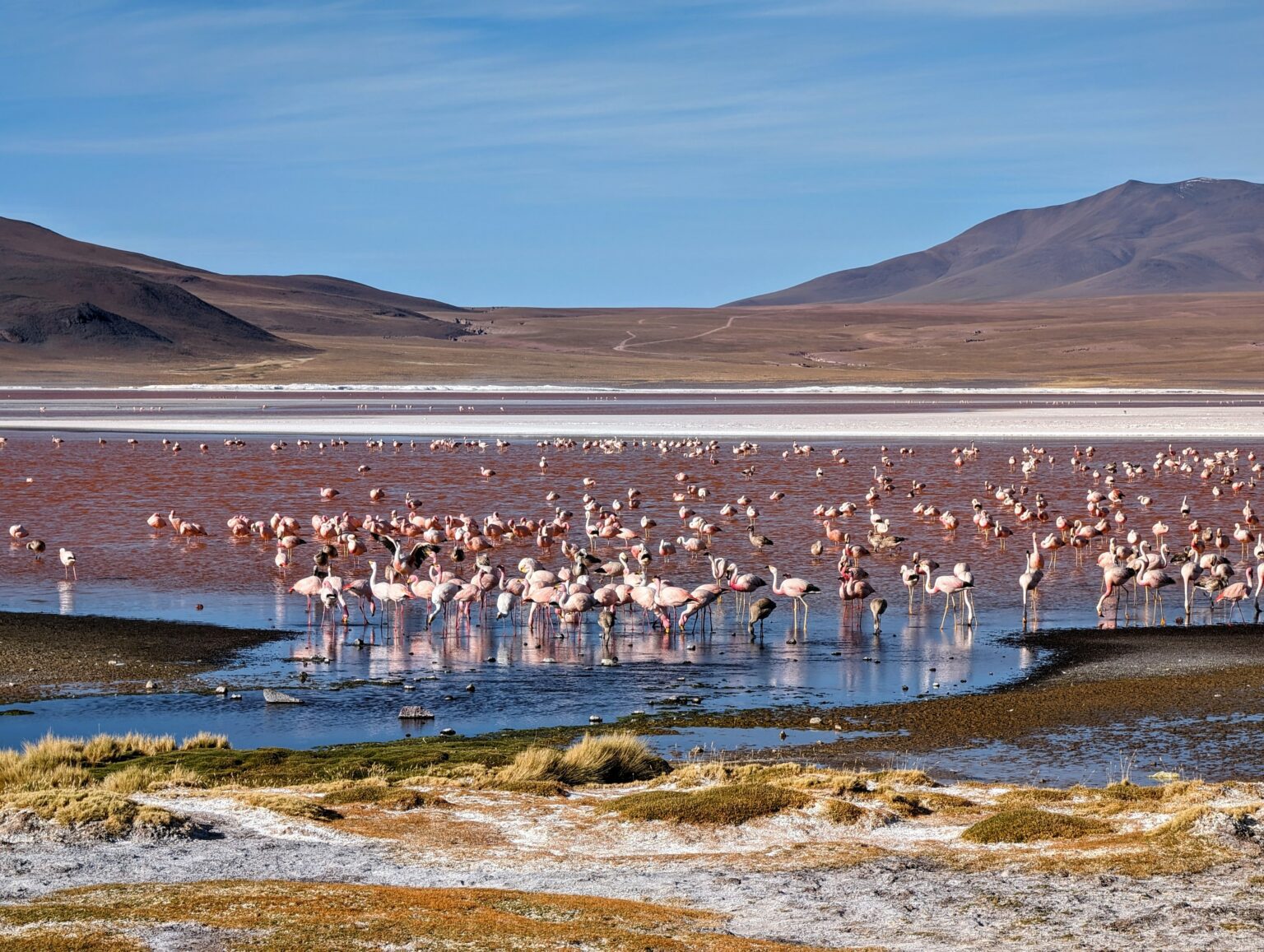The Salar de Uyuni or Uyuni Salt Flats is the world’s largest salt flat at 10,000 square kilometers (3,900 square miles) and is located in Bolivia. It is a truly incredible place to visit due to its vastness and the unique features caused by the salt. Beyond the salt flat, the region is rich in unique ecological features, including volcanoes, colorful lakes, and incredibly unique wildlife. Visiting this region and the Uyuni Salt Flats should truly be added to your bucket list.
General Information about the Salar de Uyuni (Uyuni Salt Flats)
What is the Salar de Uyuni or Uyuni Salt Flats?
The Salar de Uyuni is the world’s largest salt flat, and it is located in Bolivia. It is spectacular in photographs with polygons along the surface or a thin layer of water that reflects the world around it. Uniquely, a few islands (hills covered with plants) are within the salt-flat area. The salt flat is used for commercial salt production, lithium mining (70% of the world’s lithium is below the salt flats), and tourism.
Why is the Salar de Uyuni or Uyuni Salt Flats famous?
The Salar de Uyuni is one of the world’s largest salt flats and has become popular to visit due to the remarkable and expansive views all around the salt flats. The photos of the mirror effect, the salt hexagons, and the plays with perspective are incredibly popular. And it’s hard to stop taking photos when you are on these salt flats due to the grand and stark beauty of the area.
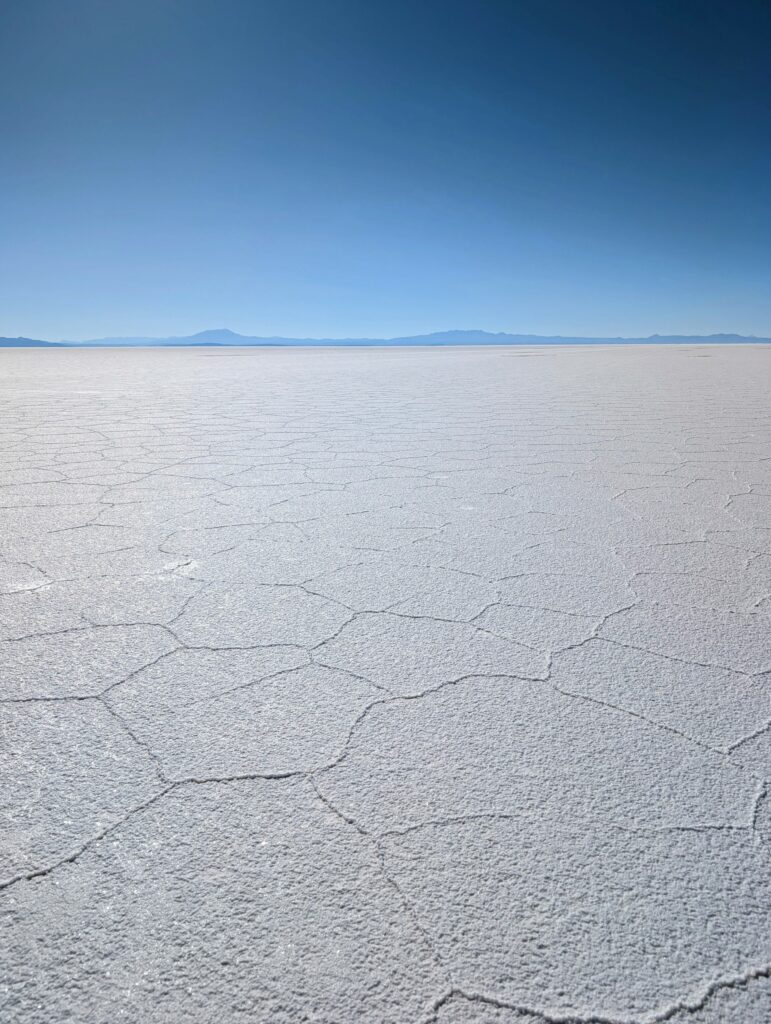
Where is the Salar de Uyuni or Uyuni Salt Flats?
The Salar de Uyuni is located in the southern region of Bolivia. There are no major cities near the salt flats so you will need to spend at least one night near the salt flats to get the most out of the region. The nearest transit hub to the salt flats is the town of Uyuni, which has bus connections to other cities and an airport with daily flights to La Paz.
How was the Salar de Uyuni or Uyuni Salt Flats created?
The huge salt flat is the result of prehistoric lakes that took water from the surrounding mountains. These lakes evaporated tens of thousands of years ago, leaving this large deposit of salt.
When is the best time to visit the Salar de Uyuni (Uyuni Salt Flats)?
Many people want to go to the salt flats to take beautiful reflection photos. When pools of water lay on the salt flats, it creates a perfect reflection. This happens in the rainy season (mid-December to the end of March). However, there are risks with visiting this time of the year because the salt flats become impossible to drive on when they are saturated with water. It is also vital to have a guide take you to the salt flats rather than renting a car and going yourself. They know the right places to drive to see water or hexagonal shapes and are experienced with these driving conditions.
If you go right after the rainy season (April), you have a better chance of having beautiful, sunny weather but will still have areas with water for the reflections. If you visit too much later, there may no longer be water on the surface of the salt flats. This will not take away from the experience of the expansive salt flats. It will just be different and you will need to set your expectations. No matter when you go, the views of these salt flats will be like nothing you’ve ever seen.
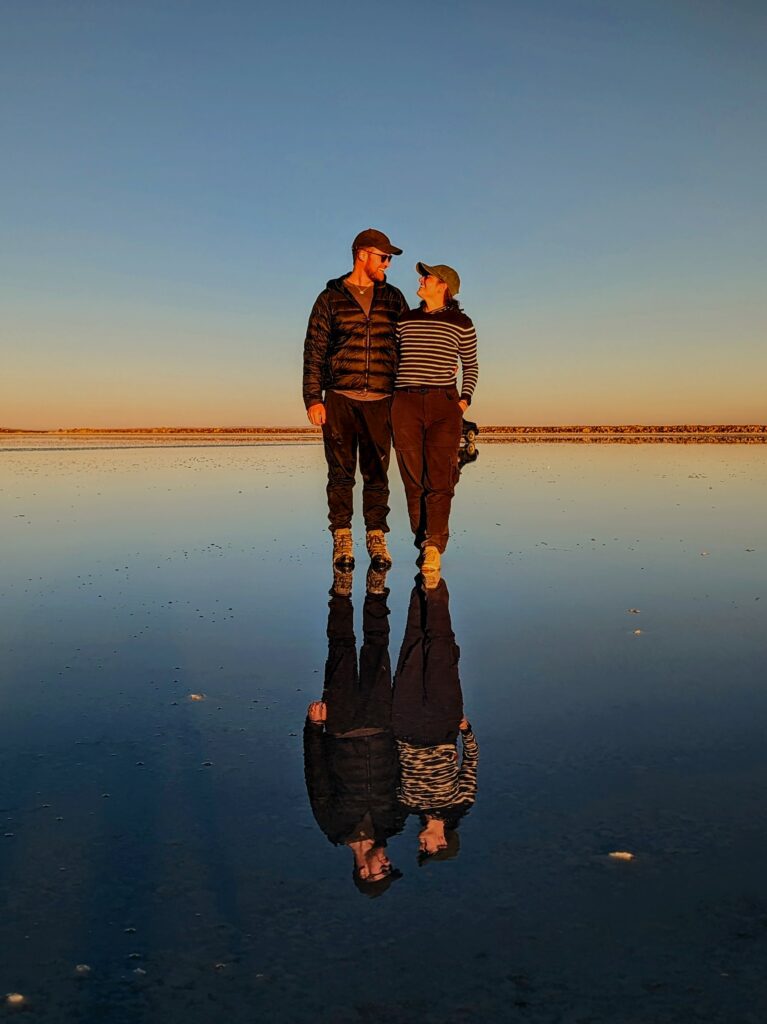
How do I get to the Salar de Uyuni or Uyuni Salt Flats?
You can rent a car to drive to the Salar de Uyuni. It is possible to visit independently. However, we recommend using a tour group or guide to visit the salt flats and potentially some of the incredible landscapes near the salt flats.
For places where there are roads, the roads in this region are dirt or gravel and often, the path is not clear. There may be issues with the car, including flat tires, burnt-out engines, and more. The drivers on these tours are experts and experienced in these areas and it is worth it to trust their expertise. On the salt flats, there are no roads and the terrain can get risky if it is saturated with water. Professional guides and drivers know the right areas of the salt flats to visit. Finally, there is no service around the Uyuni Salt Flats, so if you get in car trouble, it will be very challenging to get any help.
For a one-day tour, you will want to fly into Uyuni. From there, you will be able to do a one-day tour of the salt flats. There are many different tour agencies in Uyuni who provide these tours.
If you have more than one day to visit the salt flats, you should look into a longer 3 or 4-day tour. With these tours, you will have a comprehensive tour that includes food and housing and will not have some of the risks that come with driving on this terrain. These tours can start from Bolivia in Uyuni, La Paz, Tupiza, or from Chile in San Pedro de Atacama.
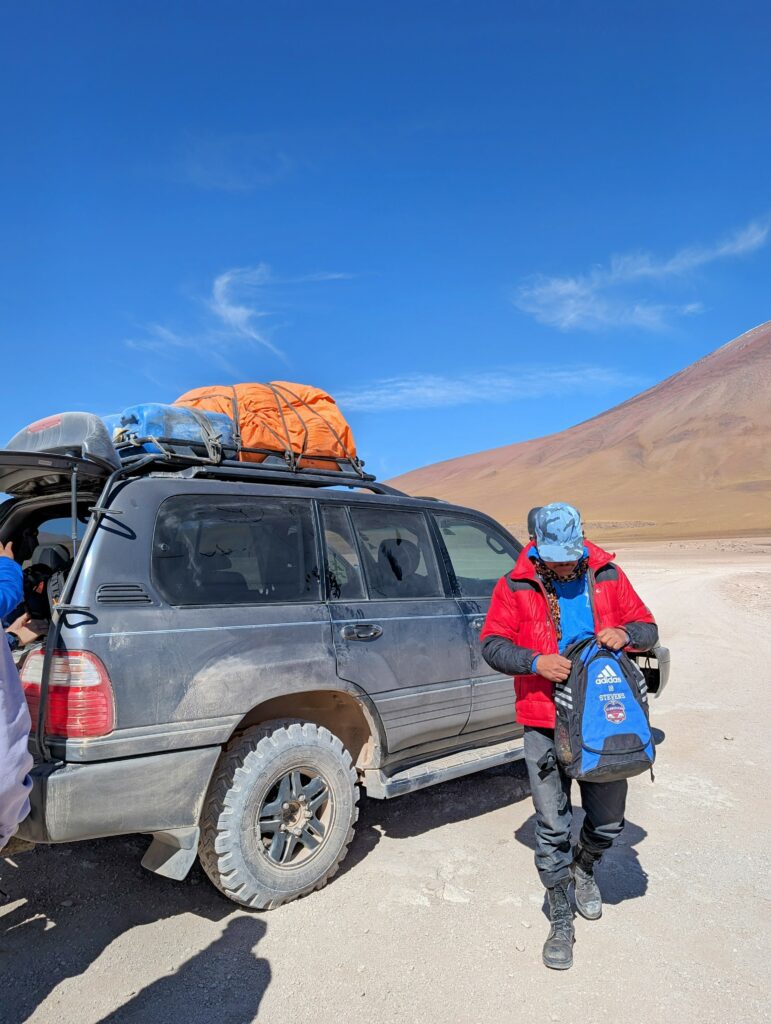
The Classic Tour of the Salar de Uyuni (Uyuni Salt Flats)
What is the Salar de Uyuni tour (Uyuni Salt Flats tour)?
The Salar de Uyuni tour is a three or four-day tour between San Pedro de Atacama, Chile, and Uyuni, Bolivia. If you return to the location you started, the trip will take 4 days, no matter which location you start. You can start this adventure from Uyuni or San Pedro de Atacama. If you do not want to return to your starting location, the full trip one way will take 3 days.
This tour takes you through the Reserva Nacional de Fauna Andina Eduardo Avaroa to some colorful lagoons (some with flamingos!), rock formations, the salt flat, thermal baths, and more. It is organized around the different natural formations that are located in national parks and reserves in the region south of the Uyuni Salt Flats.
If you do not have a lot of time to visit the salt flats, from Uyuni, you can visit the salt flats in one day. Uyuni does have an airport that you can fly in and out of and the town includes a number of tour agencies that provide tours to the salt flats.
What is included in the Salar de Uyuni tour (Uyuni Salt Flats tour)?
The multi-day tour includes housing in different hostels. You can choose shared or private rooms, each at a different price. It also includes the meals during the tour, starting with breakfast on the first day and finishing with lunch on the third day. Finally, you will have a professional driver/guide to take you to all the destinations.
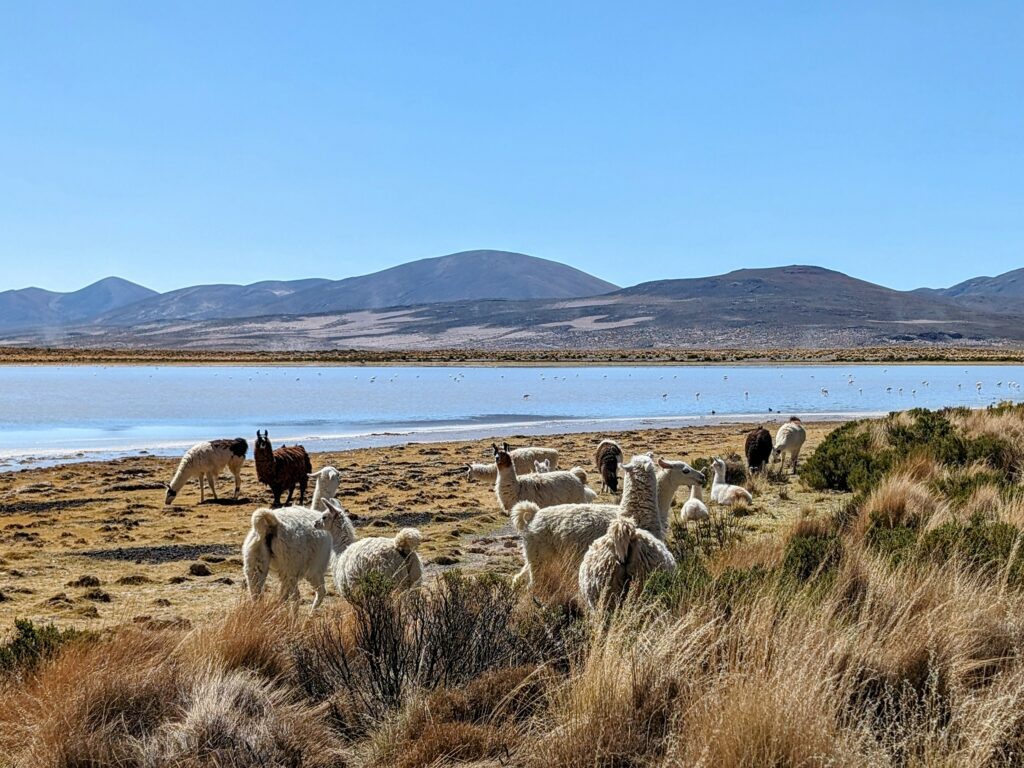
What is not included in the Salar de Uyuni tour (Uyuni Salt Flats tour)?
For the multi-day tours, the price does not include the price of entry into the national park south of the salt flats (Reserva Nacional de Fauna Andina Eduardo Avaroa), the price of the thermal baths (Termas de Polques), and the entry onto the island on the salt flats (Isla Incahausi). Tour groups are upfront about the amount of cash that you need to bring on the tour to cover these costs.
Does the Salar de Uyuni tour (Uyuni Salt Flats tour)accommodate food restrictions?
Yes, they do! Make sure to tell them in advance of any dietary restrictions you may have. However, if you are traveling in Latin America, it is important to be open-minded to the local food that is provided to you.
How can I reserve the Salar de Uyuni tour (Uyuni Salt Flats tour)?
The tour can be reserved online or through WhatsApp with a tour agency. However, if possible, try reserving the tour in person from your starting point if you have the time to do so. In both La Paz and San Pedro de Atacama, there are streets lined with tour agencies that provide this tour. To reserve the one that we did, you can explore tour options and message someone on WhatsApp from this website.
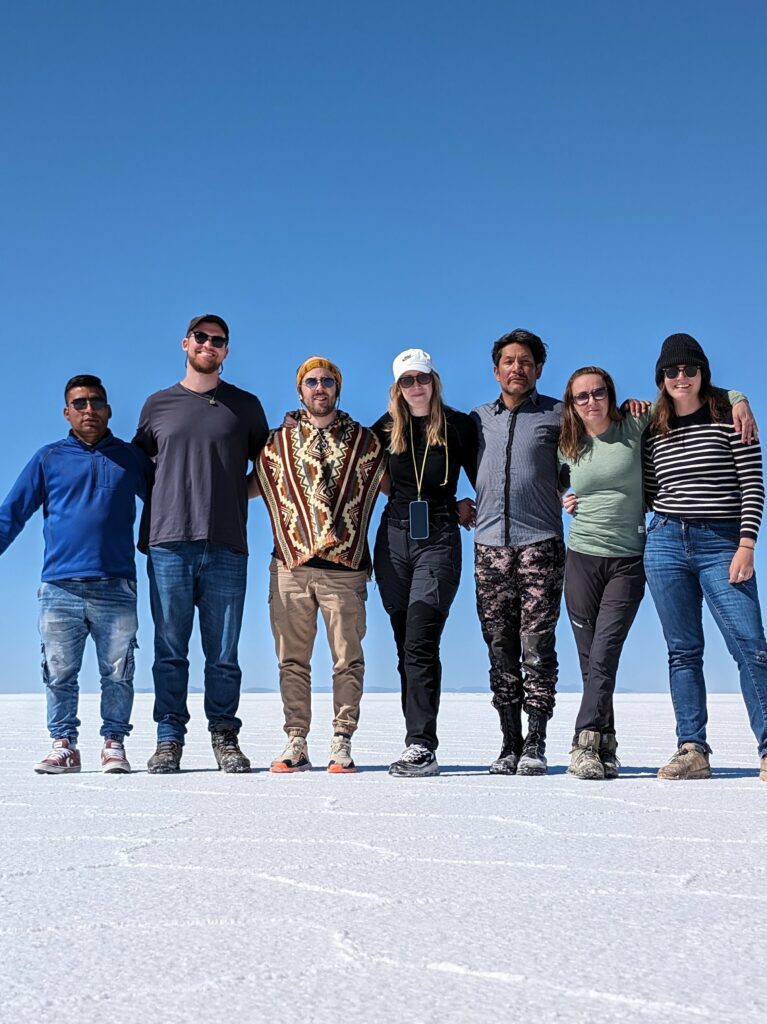
What to pack for the Salar de Uyuni tour (Uyuni Salt Flats tour)?
The temperature in the area varies between the day and evening so layers will be the best thing for the tour. You may be in a t-shirt or long sleeve during the day but you will want a sweater or jacket for when the sun goes down. Hiking shoes are beneficial for many of the landscapes you will walk over—bonus points for if the hiking shoes are waterproof. The water on the salt flats will get into your shoes and socks if they are not waterproof.
What do you get to see on the Salar de Uyuni Tour (UYUNI SALT FLATS TOUR)?
Information About Visiting Bolivia
Do I need a visa to enter Bolivia?
This is completely dependent on your citizenship. Check in advance if you need to apply for a visa prior to travel, purchase a visa upon arrival, or do not need a visa at all. People from the United States will need to purchase a visa upon arrival with cash.
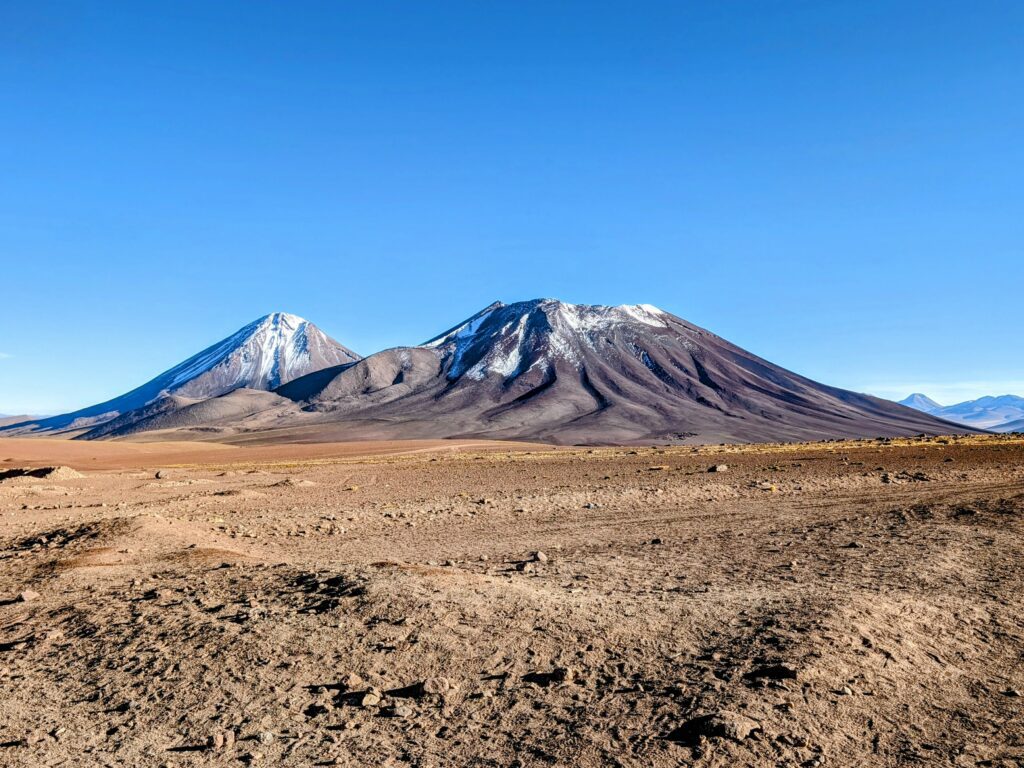
Now this next paragraph is specifically for people who are crossing into Bolivia through a land border (like from San Pedro de Atacama in Chile or through Lake Titicaca in Peru) and are dual citizens with two different passports. If one of those passports requires a visa and the other does not, you will need to enter and exit the previous country with the passport that does not require the visa. Bolivian border patrol checks your passport for the exit stamp from the previous country. For example, if you are going from San Pedro de Atacama, make sure you enter Chile with a passport that will not require a visa in Bolivia. Then, exit Chile and enter Bolivia with that same passport.

